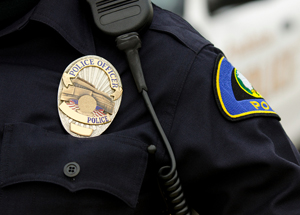Communities are eager to invest in their schools’ safety and physical security. This increasingly includes a push to add school resource officers (SROs), sworn officers, or other armed security to every school. But doing so has proved challenging in many districts.
School resource officers—although sometimes the focus of controversial news coverage—are far from new. SRO programs date back to the 1950s, when America first began to sense a need to actively foster positive relationships between local police and young people. A half-century of officers in schools has created many excellent working relationships. But we still haven’t developed a set of “best practices” for integrating school administration and security personnel. As Nina Salomon, a senior policy analyst at the Council of State Governments Justice Center, explained to The Atlantic in 2015:
“All officers are getting a certain level of training that they’re required to get as police officers. The additional training …on youth development, on working with youth, on prevention and de-escalation—hasn’t typically been received by the majority of law enforcement that work with youth inside a school building.”
This puts enormous strains on officers and security guards in the schools.
A Nationwide Shortage of School Resource Officers
The U.S Department of Education regularly releases reports on “Crime, Violence, Discipline, and Safety in U.S. Public Schools.” According to the most recent report available, there are currently roughly 56,540 sworn officers, SROs, and security guards working in our nation’s 83,600 public schools.
That’s less security personnel than in years past—despite increasing demand. The number of sworn officers and SROs remains largely unchanged from the previous NCES report, but school security guards have dropped drastically, from approximately 40,000 to less than 17,000.
In fact, we’re suffering a nationwide shortage of law enforcement, as well as issues with officer retention. Many factors come into play, but the primary three appear to be:
- Historically low unemployment resulting in high demand for workers in general
- Few incentives for the most qualified people to enter such a challenging field
- Too few qualified applicants
As a result, two-thirds of all police departments are seeing fewer applicants than ever before. Almost three-quarters of all officers leave policing having served less than five years.
Are Security Staff and School Resource Officers the Best Solution?
In a retail setting, armed guards seem to have little deterrence effect—or even increase the likelihood of a violent incident. There is some research indicating that mass shooters are not deterred by armed opposition—and may actually find it appealing. According to criminologist Adam Lankford, “For some mass shooters, knowing they wouldn’t be shot and killed could actually have a deterrent effect.”
Jim Richards, CEO of Total Security Solutions, has decades of security experience. He’s long advocated for the deterrence power of a properly designed security barrier system.
“This isn’t just a matter of opinion,” Jim explains. “We’ve been doing this for decades in all sorts of settings. And we’ve watched the numbers. When more facilities have bullet resistant barriers, they see fewer violent altercations. That’s a lot of value for a one-time improvement to your facility and some smart adjustments in how you do things.”


